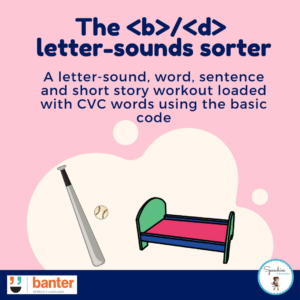(R206) b/d letter-sounds sorter (a letter-sound, word, sentence and short story workout with CVC words)
$5.99 including GST
In this 14-page pack, we introduce a couple of the best ways we have found to help children who confuse the two letters (and their sounds). After a brief <b> and <d> letter-sound recognition drill, we then jump into practising decoding the letters in words, sentences and stories.
In our preferred sequence, we target <b/d> confusion after consonant-vowel-consonant (CVC) words, and before consonant-consonant-vowel-consonant (CCVC) words or the extended code.
For this reason, our sentences are loaded with CVC words that can be decoded with knowledge of the basic code, with a just a few high frequency sight words like “the”.
Description
A letter-sound, word, sentence and short story workout loaded with CVC words using the basic code.
Many children (and adults) who are learning to read – including many people with dyslexia and other reading problems – have difficulties telling the difference between <b> and <d> letters. They often confuse the /b/ and /d/ speech sounds linked to these two troublesome letters.
When introducing the letters, we usually separate them using an evidence-based letter-sound sequence. It’s a good idea not to introduce the letters together. You can see some examples of sequences here.
In any sequence, learner readers are eventually expected to read texts containing both letters. At this stage, it is not uncommon for readers to get (and stay) confused.
Too often, and for too long, many programs target the letters in isolation. This can be very helpful for beginners, but does not always transfer across to words, sentences and stories.
In this 14-page pack, we introduce a couple of the best ways we have found to help children who confuse the two letters (and their sounds). After a brief <b> and <d> letter-sound recognition drill, we then jump into practising decoding the letters in words, sentences and stories.
In our preferred sequence, we target <b/d> confusion after consonant-vowel-consonant (CVC) words, and before consonant-consonant-vowel-consonant (CCVC) words or the extended code.
For this reason, our sentences are loaded with CVC words that can be decoded with knowledge of the basic code, with a just a few high frequency sight words like “the”.
More information and resources
For free, evidence based on effective reading instruction, check out these articles:
- Is your child struggling to read? Here’s what works
- Too many children can’t read. We know what to do, but how should we do it?
For free, decodable stories focusing on the basic code, check out: Is your Kindy kid really reading? Find out with our 7 free mini stories
- CCVC Words in Sentences: Is Stan a brat?
- CVCC Words in Sentences: Wendy has zest!
- Split digraph minimal pair sentences
- Polysyllabic words in sentences
For our ‘Select-your-Sequel’ adventure series of decodable texts for 7-12 year-olds focusing on the extended code and reading fluency – including the free first book – check out The Scatter-Slayer Adventures.

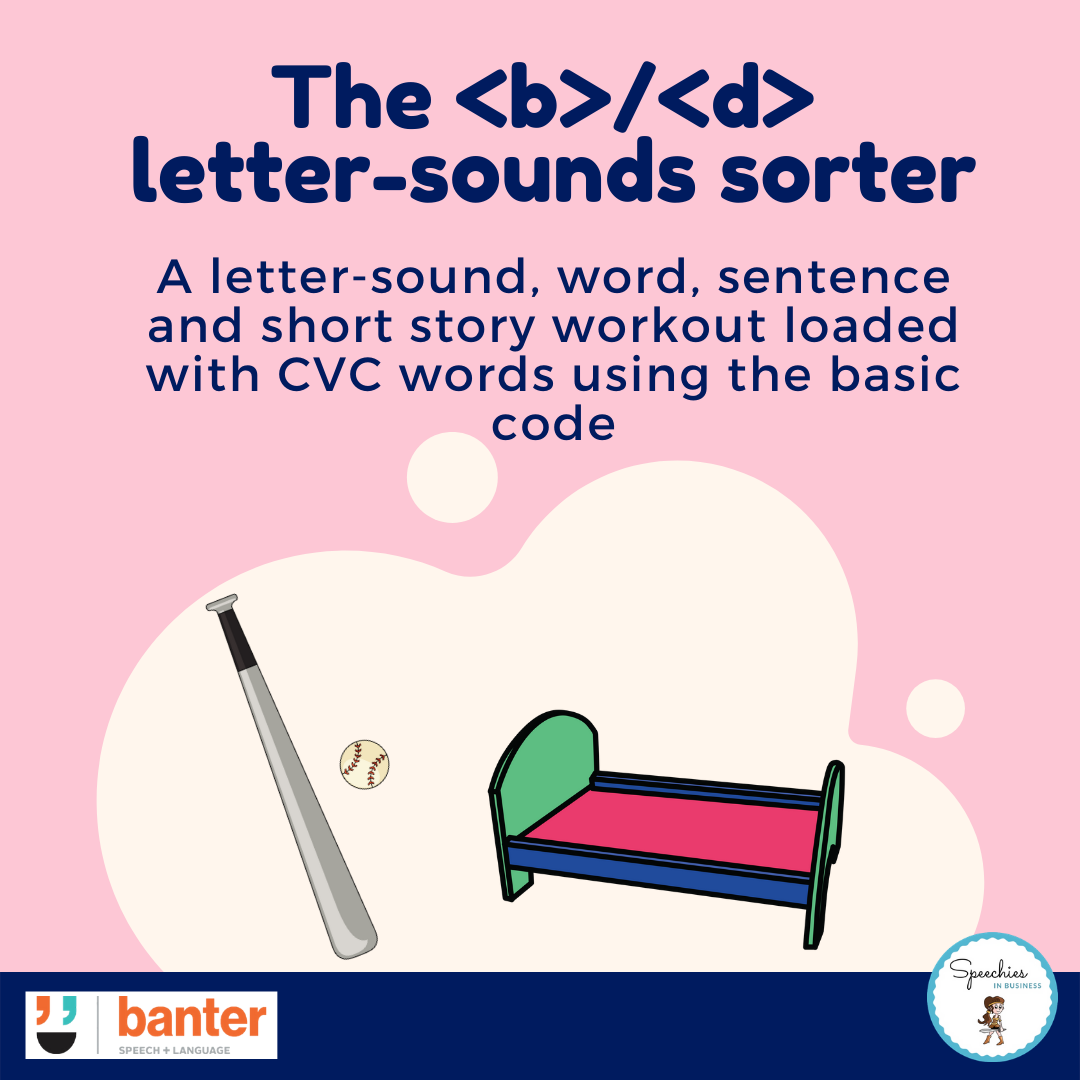




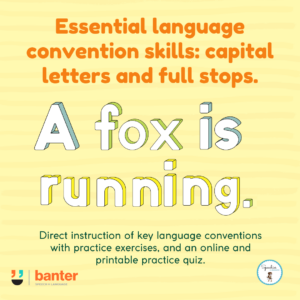
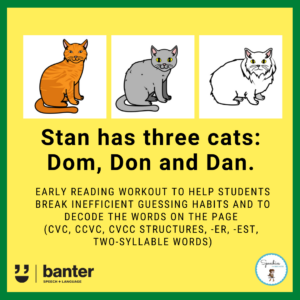
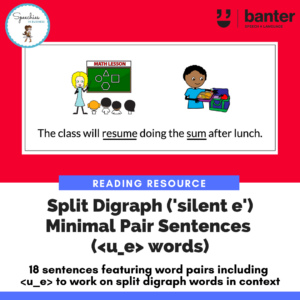
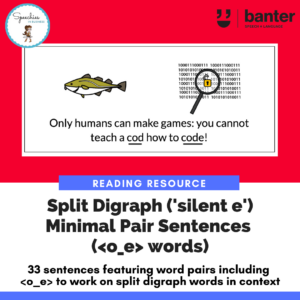
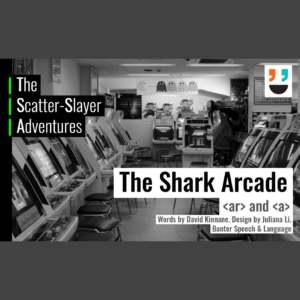 (R419) The Shark Arcade
(R419) The Shark Arcade 